How to choose upholstery
Buying a sofa or an armchair? Find out exactly what you need to know using our expert guide to how to choose upholstery


A big-ticket purchase for most, there are a lot of different factors to consider when it comes to choosing a sofa or armchair for your living room.
While the style of sofa and your choice of fabric require careful thought, the importance of good-quality upholstery shouldn't be downplayed – particularly if comfort is a priority.
With this in mind, we have put together a comprehensive guide to help you choose upholstery that will fit with your living room design and satisfy you in terms of comfort.
Once you're ready to shop you'll find the Real Homes team's guide to the best sofas a great place to start.
Where should I start when buying upholstery?
Don’t order a settee or armchair online without first trying it out in person, as you need to check it is comfortable and will also be able to see the full range of fabrics in store.
‘For such an important purchase, it’s essential to shop around and review all your options,’ advises Sarah Massouh, founder of Willow & Hall. ‘Focus on companies that value craftsmanship and offer at least a 10-year frame guarantee.’
Before you go shopping, gather together any paint or fabric swatches that reflect the design of your room, and take measurements of the space. Use your current upholstery as an indicator of size (width/length, depth and height) and to help you visualise the proportions.

Dixie sofa in Bumblebee Clever velvet, from £1,395 for a small two-seater, Loaf
How much should I pay for a sofa or armchair?
While you can easily find a sofa for under £500 – we've even identified some of the best – or pick up an armchair for less than £200, bear in mind that it will require reupholstering in the future and may end up costing you more in the long run.
As cheaper models don't offer the same quality as pieces made using traditional methods, it's also worth remembering that they may not take well to attempts to reupholster.
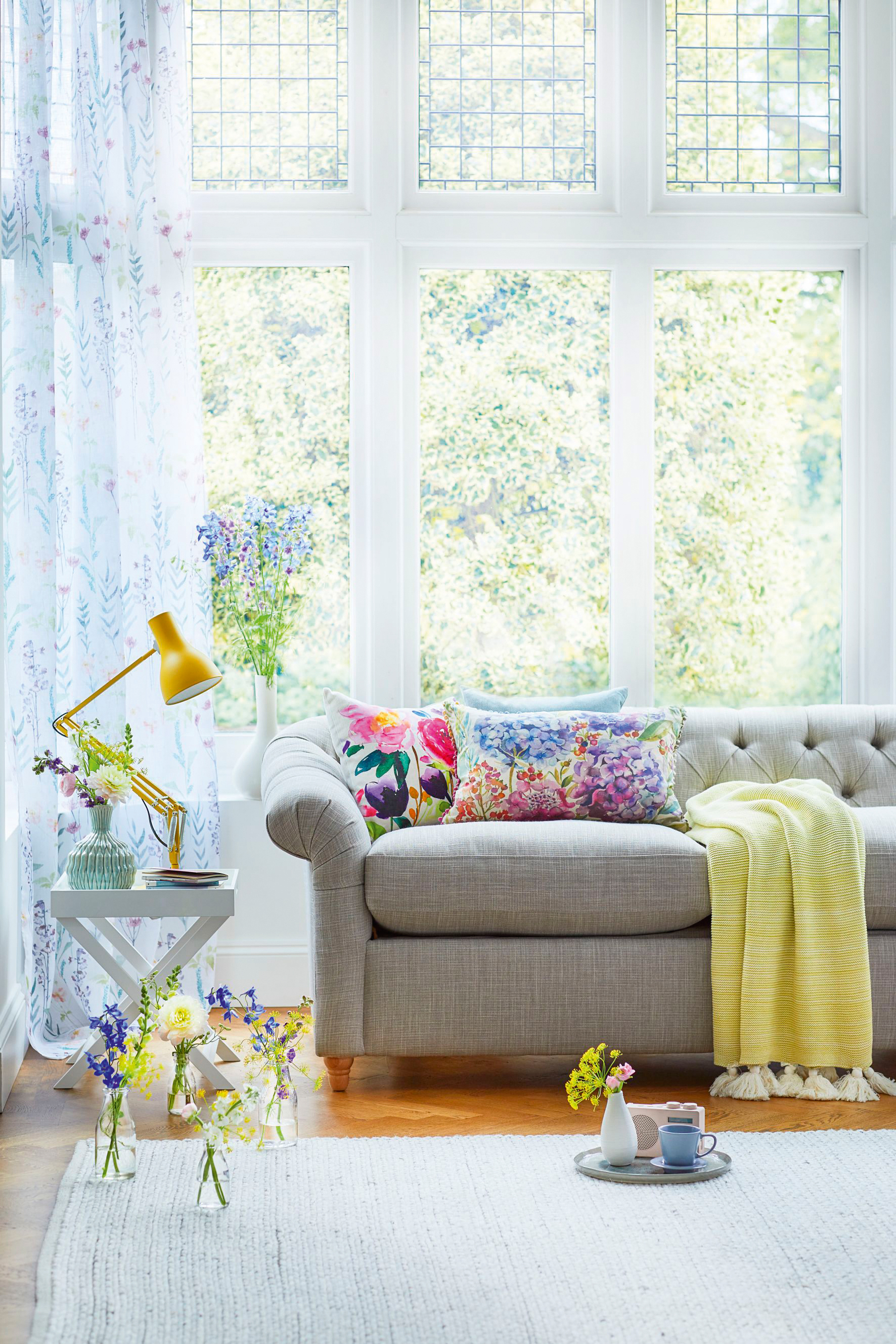
Kittisford sofa in Vintage Grey House Linen, £1,247, Willow & Hall
Get more expert renovation advice and home inspiration to your inbox every week by signing up for the Period Living newsletter.
How is the best quality upholstery made?
If you are on the look out for quality craftsmanship, take some tips from Kate Tansley, creative director at Multiyork:
- Look for something handcrafted using traditional methods;
- Choose a hardwood frame (such as beech);
- Cheaper sofas are made using softer woods such as pine, cedar and redwood, which are more likely to warp;
- The frame must be joined with dowlings and screws, not just glue;
- Cheaper couches may be made from particleboard;
- High tensile steel springs are preferable.
Once the frame has been built, the back and base are either webbed, with a series of coil springs added to the web, or, more commonly these days, fully sprung using serpentine springs, which from a continuous zig-zag pattern. ‘Webbing or mesh can sag over time and put unnecessary strain on the frame,’ adds Kate.
The piece is then padded to create the finished shape, and covered in fabric. Materials used for padding can include wool fleece, wool felt and horsehair, layered with interlinings and canvas.

How can I check that a sofa or armchair is good quality?
A well-made piece of upholstery should be heavy – to test it, try to lift it at the corner – and it shouldn’t rock or bend. Press lightly along the arms and under the cushion, around the seat and backs – these should be well padded and you shouldn’t be able to easily feel the wooden rails.
Also examine the finish of the cover – the fabric should be pattern matched and the valance and back panels hand sewn.
What difference do the springs make?
The springs control how firm or soft the seat is, and the best way to discover your preference is to try out the different options. Paul Staden, CEO of Sofa Workshop, advises: ‘For a softer sit, look for coil-sprung seats and fishmouth edges, which offer comfort and support right up to the edge of the seat, while for more upright pieces, choose heavy gauge serpentine springs.’
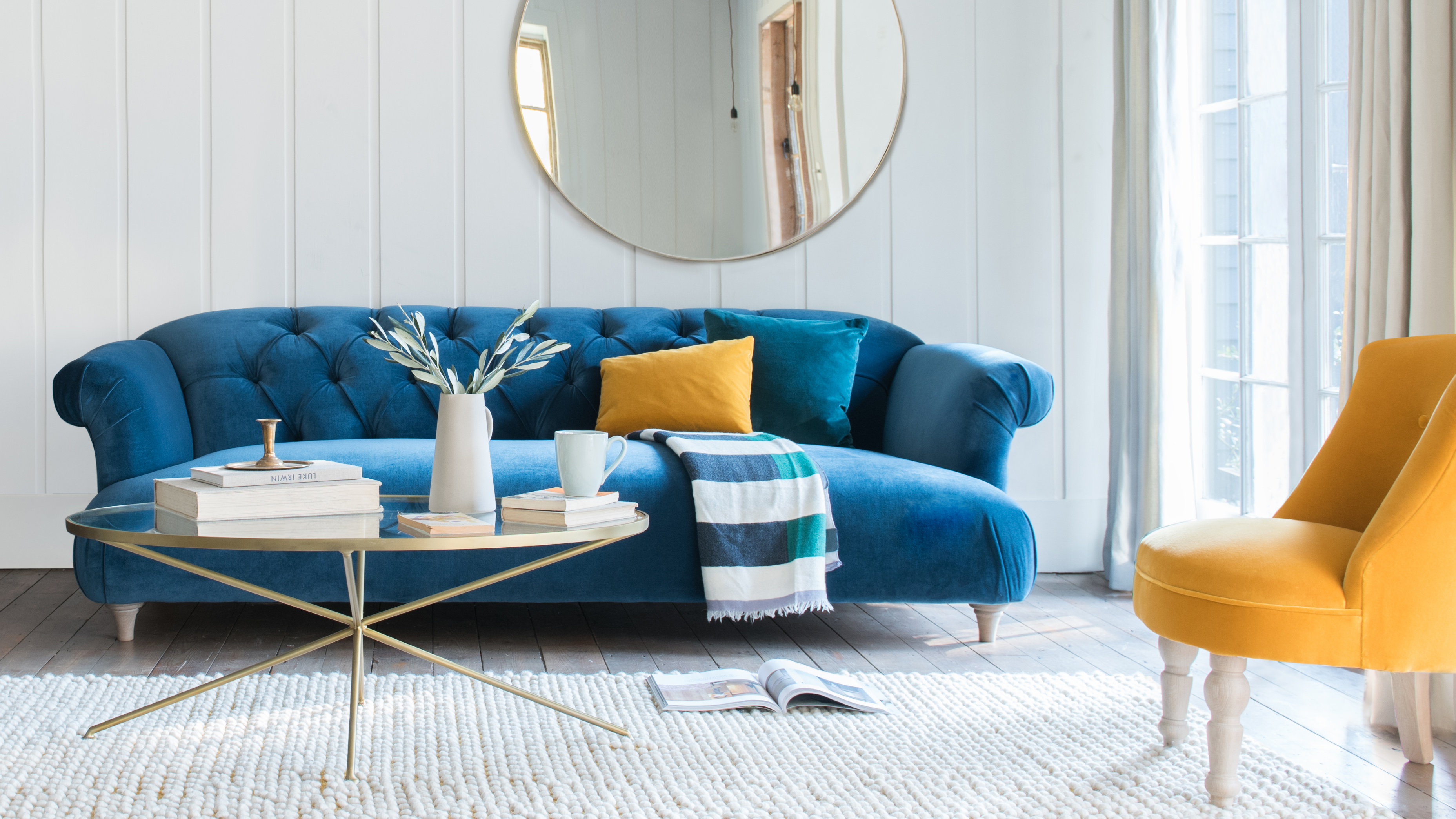
Dixie Sofa, from £1,345, Loaf
Which sofa filling should I opt for?
How upholstery is filled has a big impact on both the way it feels and the support it offers. The different options each have their pros and cons, but overall the choice of filling really comes down to which you find the most comfortable.
Feathers
‘A high- grade duck feather cushion is one of the most comfortable options; the naturally curved feathers mould around the body and offer a sumptuous feel for a sofa or armchair you can just sink into,’ says Multiyork’s Kate Tansley.
‘Duck feather-filled cushions do require a little more aftercare than other options, however, as they need regular plumping and turning to keep their shape.’
Lower-grade feather cushions can clump with use, so some designs are mixed with man-made fibres to reduce the problem.
Fibre
Fibre-filled cushions tend to be a cheaper option than feathers and still offer a soft feel but with more support. They consist of man-made hollow-core fibres, pumped full of air for fluffiness.
To keep the couch looking its best, the cushions will need regular plumping and turning, but usually not as frequently as with feathers.
The cheapest fibre-filled cushions have a reputation for flattening quickly and requiring ever more plumping over time, but many manufacturers are now using high-quality fibre, which offers much greater longevity.
Foam
For a more structured sofa or armchair style and maximum support, opt for foam. There are a number of different options available, including hybrid cushions, which are wrapped in feathers or fibre for a softer look and feel.
Be wary of the cheapest polyurethane foams, however, which can flatten over time.
‘For a very supportive and quite firm sit, opt for reflex foam, which keeps its shape well and needs little maintenance – just a simple turn every two to three months,’ says Willow & Hall’s Sarah Massouh.

Choosing an upholstery design
Upholstered furniture comes in a range of well-known traditional styles, from button-back Chesterfield couches to low-armed Howard sofas and tall-sided Knole settees, as well as countless classic shapes more loosely inspired by historic designs.
When choosing an upholstery design, bear the following design tips in mind:
- In general, curvy sofas and armchairs are better suited to a traditional living room while seats with squared edges fit better in a more contemporary space.
- Designs with a bigger gap between the floor and the base tend to look more sophisticated, while loose cover sofas with skirts suit relaxed country-style schemes.
- Scroll or swan-neck arms are great for leaning on and lend an elegant look, while pea arms are a neat solution that help save space in small rooms, but don’t offer much support to lean against.
- Scroll or swan-neck arms are great for leaning on and lend an elegant look, while pea arms are a neat solution that help save space in small rooms, but don’t offer much support to lean against.
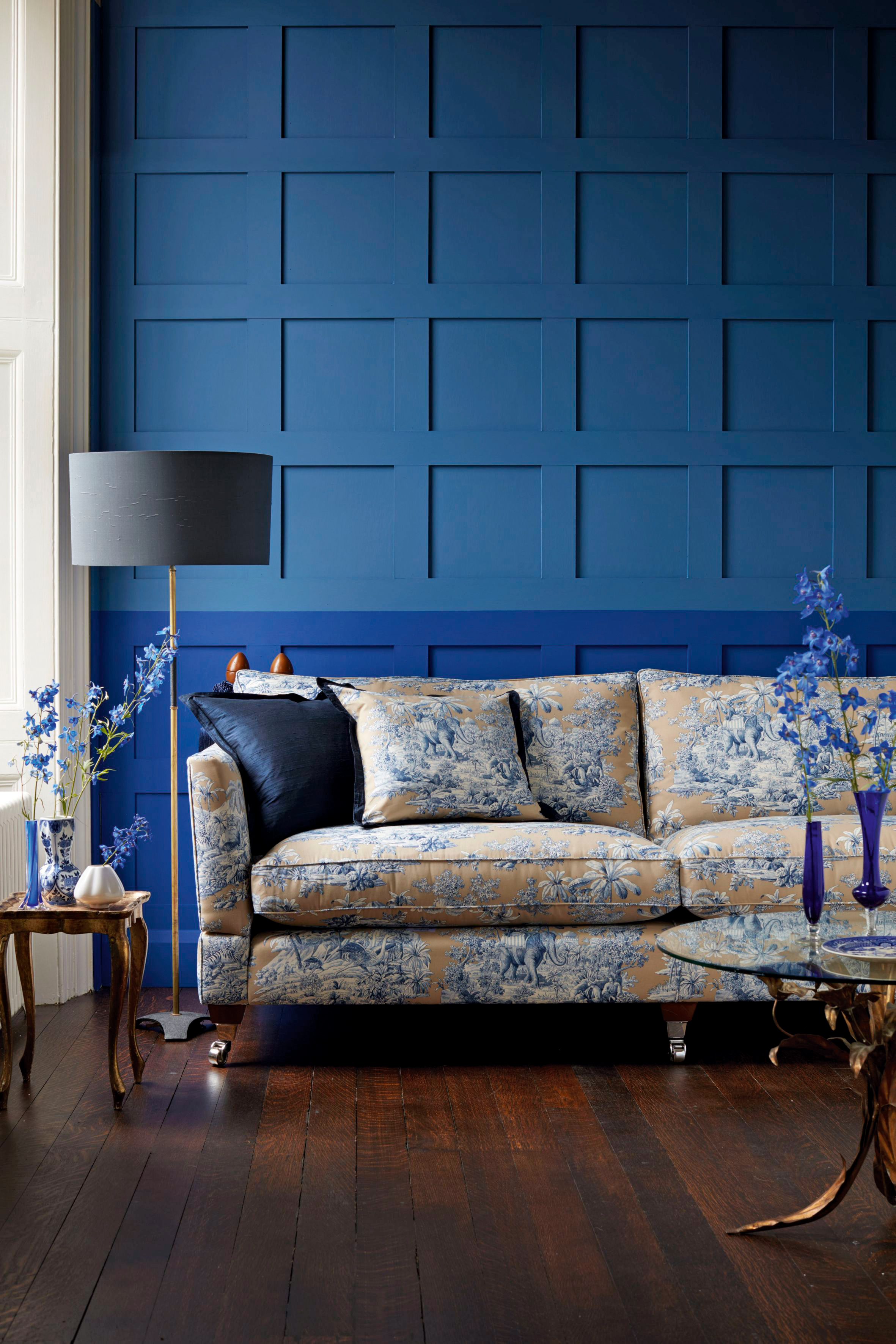
What should I look for in an upholstery fabric?
There are plenty of hardwearing fabrics to choose from, whether traditional jacquard weaves, damasks, crushed velvets or leathers that improve with age.
‘How a fabric wears depends on the sort of fibre it is made from, how tightly the yarn is spun and how closely the yarns are packed in the weave,’ says John Kitching, director of Northcroft Fabrics.
‘Silks are satisfactory for drawing rooms where they receive light wear but wool, cotton or synthetics will give much harder wear for everyday living. As long as they are tightly woven, most kinds of velvet are very durable as the wear is taken on the end of the pile tuft.’
‘Check the fabric’s capabilities,’ adds Sofa Workshop’s Paul Staden. ‘All fabrics have these noted in the swatch books, along with composition and rub tests. Upholstery fabrics for domestic use must hit minimum 10,000 rubs, but most come with at least 20,000 rub counts.’
In addition, an upholstered item should have a ticket that displays its fire resistance. Upholstered furniture for domestic use must pass the cigarette and the match test or, if it is made from more than 70% natural fibre, can be used with a fire retardant lining so long as it passes the cigarette test. Other fabrics can be backcoated with fire retardant chemicals.
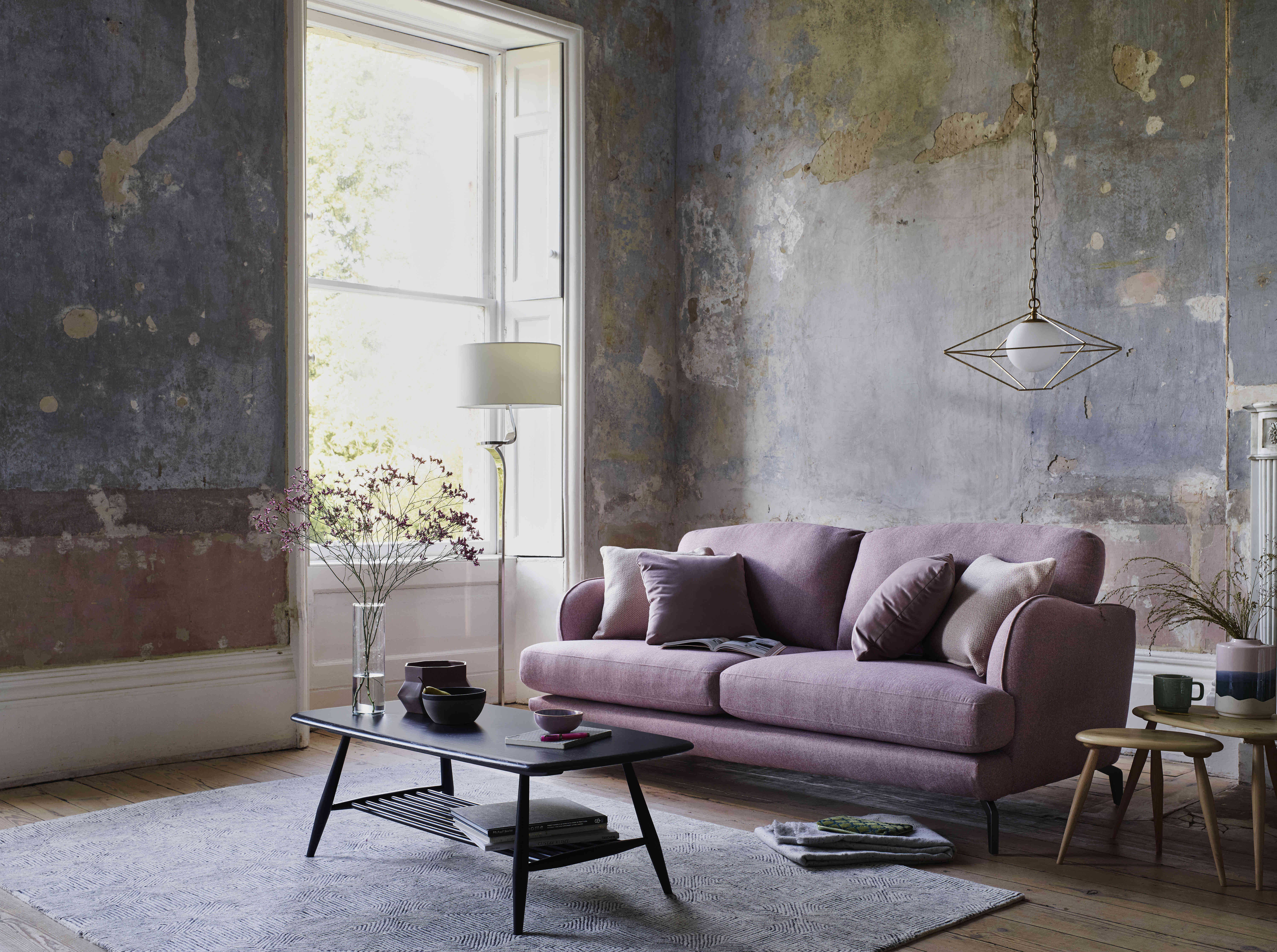
Should I go for a plain or patterned fabric?
When it comes to choosing upholstered furniture, make sure it is in a design you genuinely love and feel you can live with for a long time, as fashions change regularly. While plain colours are more versatile, pattern wears stains and damage better.
If pattern is your preference, be sure that the print you choose suits the piece it is covering. For example, traditional fabrics will look better on classic pieces, while neutral fabrics work well on contemporary designs.
You should also consider the scale of the pattern – a big, bold print will go better in a large room, while delicate designs are more suited to a small living room.
‘Fabrics are a great way to capture the character of a period home, and archive prints from companies such as Sanderson or Morris & Co will add colour and pattern without throwing your decorating scheme out of line,’ says Multiyork’s Kate Tansley.
‘In additon, many contemporary patterns contain traditional motifs, so you can reference a style era without recreating it.’
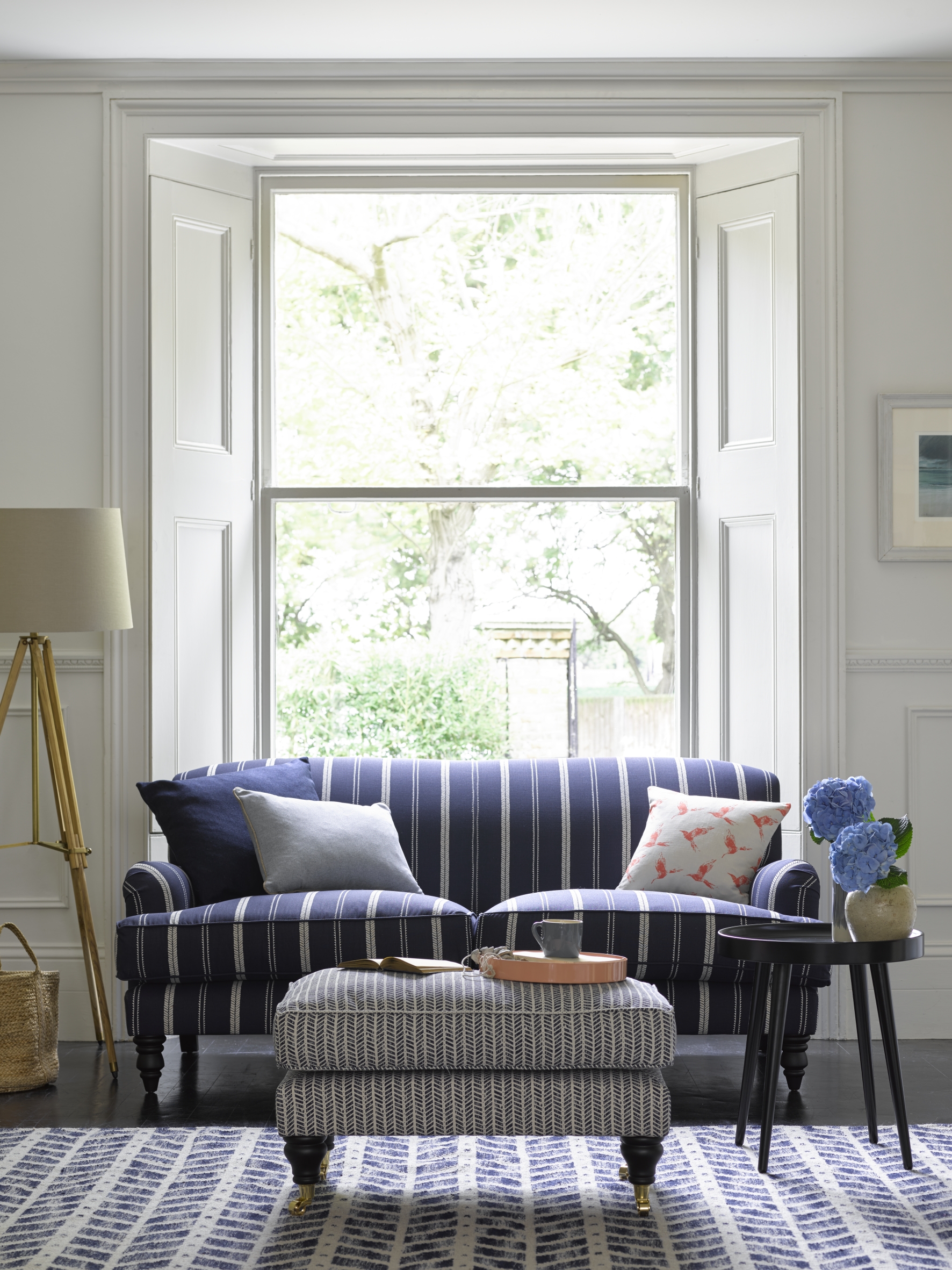
Snowdrop Two and a Half Seater in Anchor, Sofa.com
Pet-friendly fabrics
If you have pets, you will need your fabric to be particularly hard-wearing. Thick leather is ideal as pet hair and light dirt can be wiped off. However, many companies offer a stain guard treatment for fabrics, which repels stains, as an optional extra.
If you have cats, you may want to avoid fabrics with an open weave, such as linen, as they can get their claws into it. They are unlikely to pluck velvet, but it will pick up their fur so you’ll need to keep a lint roller to hand.
Wool is a hard-wearing fabric choice, but pet hair can really bed into it, making it difficult to remove with a lint roller.

Croft Findon three-seater sofa in Sophie Mist, £1,779, John Lewis
- Find the best pet hair vacuum cleaner to keep your upholstery looking good
Are fixed or removable covers best?
When upholstery is described as ‘loose cover’ it means that all of the fabric can be taken off for cleaning or replacing. On a ‘fixed cover’ settee or armchair, the frame will be tightly covered with fabric that can’t be removed. Loose cushion covers can usually still be removed, however.
‘What’s best for you depends on your lifestyle and the look you want – if you prefer a relaxed feel and have young children or pets, then removable washable covers may be better. But a more formal-style piece really needs to be tight covered,’ says Sofa Workshop’s Paul Staden.
‘Removable covers offer more design flexibility, though,’ adds Janus Cooper, managing director of Tetrad. ‘They are a great option if you are likely to want to change the look of your couch over time.’
Find more tips on choosing a sofa fabric in our specialist guide.
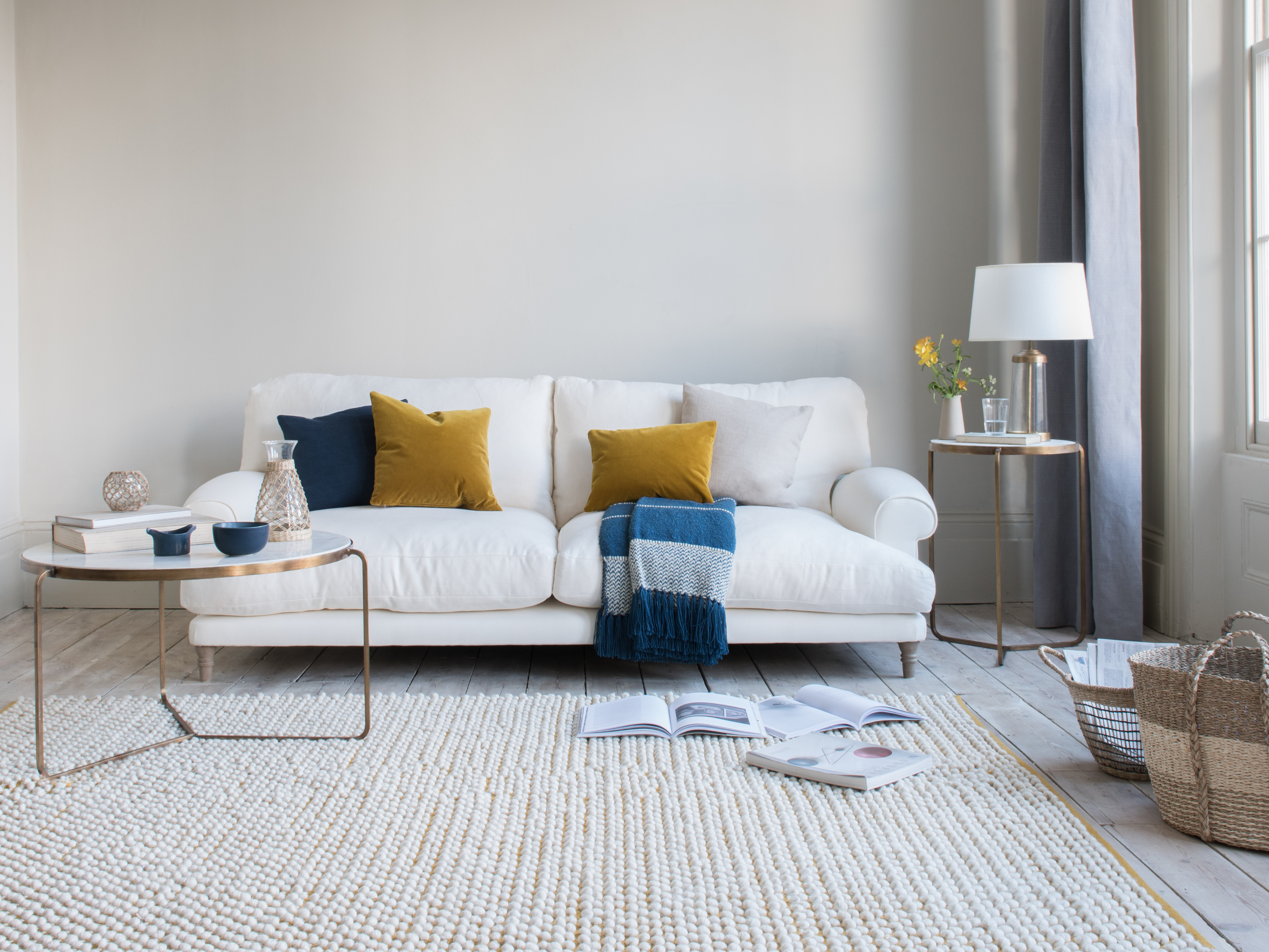
How to care for upholstery
‘You can extend the life of your upholstery and maintain its quality and comfort with some simple regular maintenance,’ says Clive Kenyon-Brown, chief executive at Duresta.
‘All cushions should be turned and interchanged regularly to distribute wear. Feather or fibre cushions especially should be plumped up daily and their position interchanged to maintain their appearance and allow the fillings to recover.’
‘As well as plumping cushions to keep them in shape, it’s important to vacuum the fabric regularly to remove dust, as if left it can become ingrained and rot the fibres,’ advises Sofa Workshop’s Paul Staden.
‘A weekly brushing stimulates the pile and helps prevent pressure marks and shading through everyday use, particularly on velvets, which should be brushed in the direction of the pile. You should also have upholstery cleaned every year to 18 months, dependent on use.’
Tetrad’s Janus Cooper adds: ‘Many loose-cover settees and armchairs are washable, but for fixed covers I recommend dry clean only.’ Having cushions dry-cleaned separately can result in a slight mismatch of colour on the furniture. Any cleaning should be done to the whole piece to balance the effect.
‘For leather pieces, you should avoid vacuum cleaning,’ adds Janus. ‘Instead, dusting furniture regularly with a soft cloth or brush will stop the dust and dirt that causes premature wear from accumulating.’
To keep your couch looking like new, position it out of prolonged direct sunlight, as the fabric colour will fade. Some fabrics do 'pill' easily, but tend to settle down over time.
Find the best upholstery cleaners in our buyer's guide, and find out how to clean upholstery in our step by step guide.
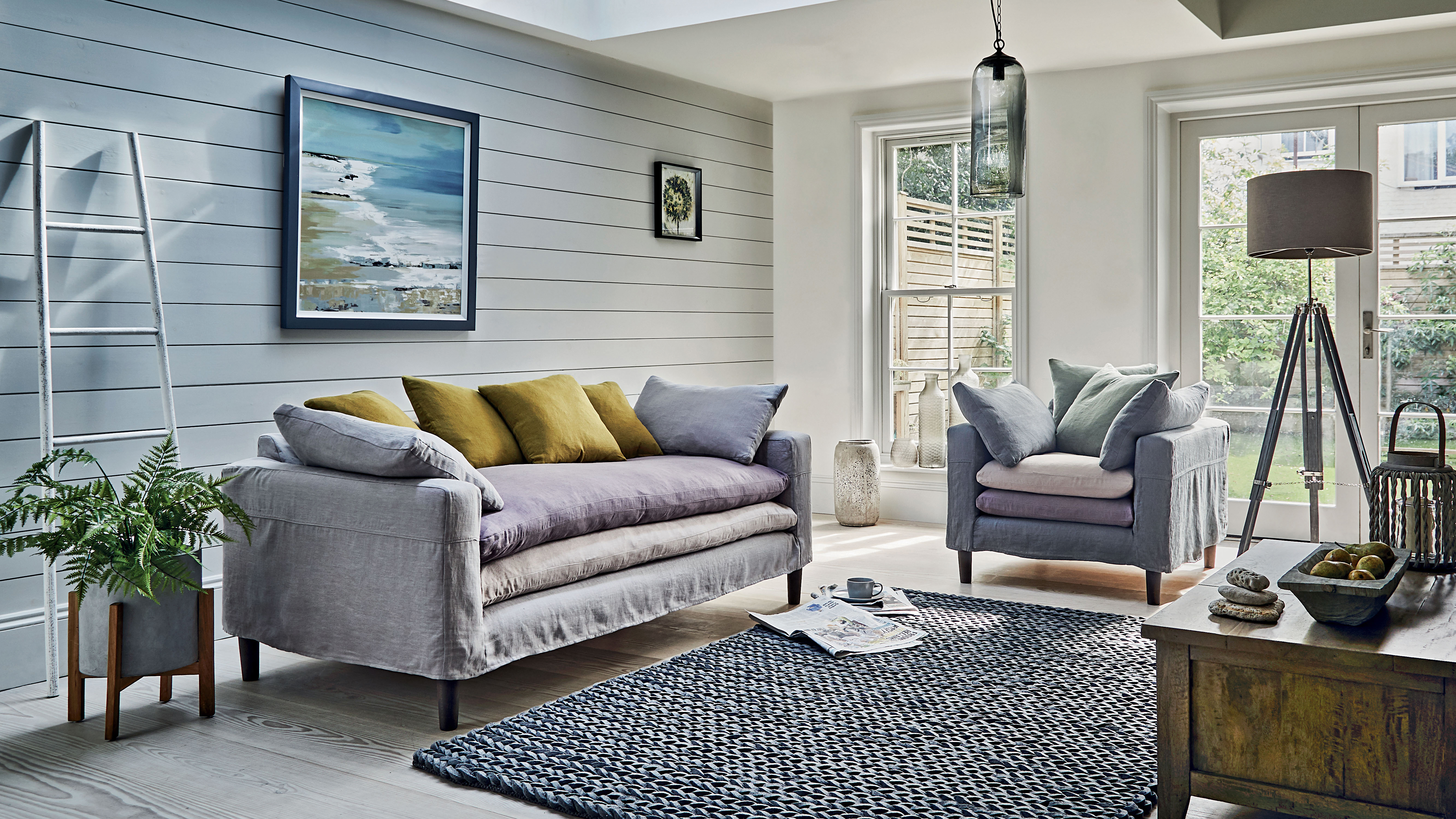
Pablo loose-cover linen three-seater sofa, £2,239; Pablo loose-cover linen armchair, £1,649; Barker & Stonehouse
Options for reupholstering
The frame of quality upholstered pieces often outlasts the fabric and fillings by many years. For this reason, some manufacturers offer a renovation service for their own designs and may even guarantee the price of refurbishment at the time of original purchase.
Not all manufacturers offer a re-upholstery service, but there are many small firms around the country who update sofas and armchairs, so check local directories and contact two or three for quotes.
As well as updating the fabric, the upholsterer can repair any damage to the frame and springs, and refresh the filling to make your settee or armchair as good as new.
Expect to pay around £300-500 for a simple armchair or small sofa, up to and over £1,000 for a larger couch or more intricate design.
Looking for more living room inspiration?
- 12 statement velvet sofas
- How to create the best living room layout
- 8 inspiring traditional living room ideas
Get small space home decor ideas, celeb inspiration, DIY tips and more, straight to your inbox!
